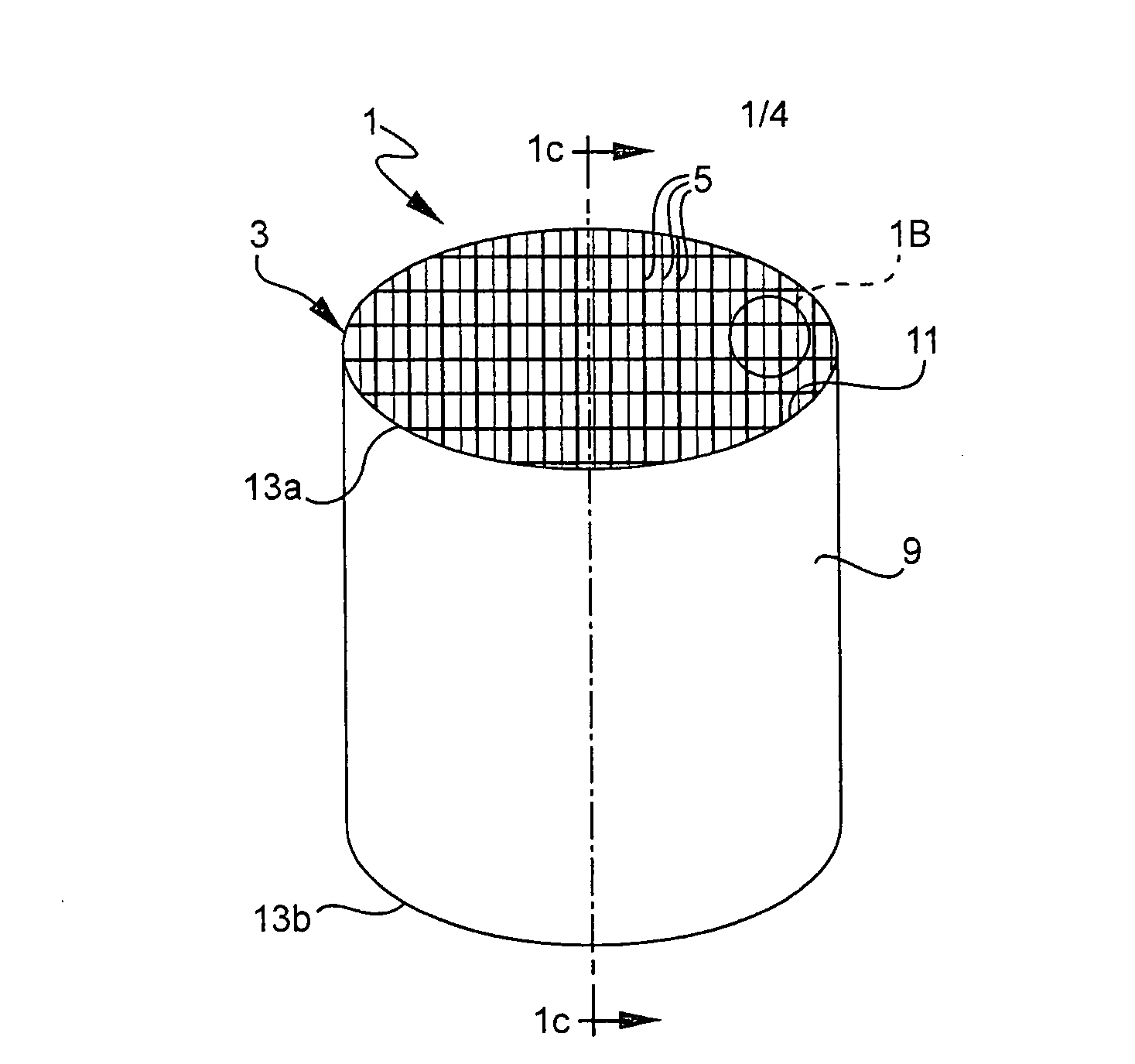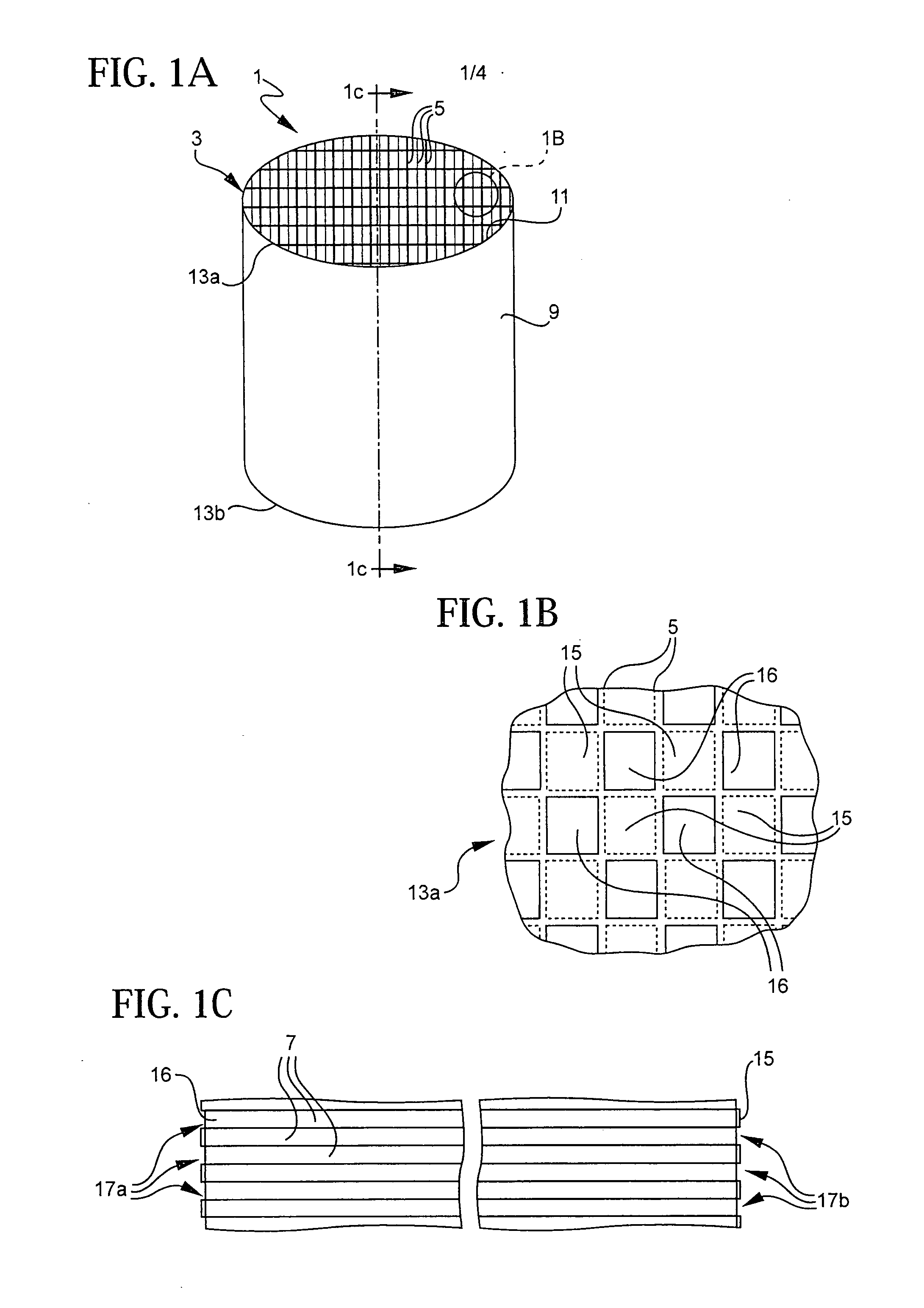Co-extrusion method of fabricating electrode structures in honeycomb substrates and ultracapacitor formed thereby
- Summary
- Abstract
- Description
- Claims
- Application Information
AI Technical Summary
Benefits of technology
Problems solved by technology
Method used
Image
Examples
Embodiment Construction
[0023]With reference to FIGS. 1A-1C, the invention is preferably applied to ceramic honeycomb substrates 1 of the type used as diesel particulate filters. Such substrates 1 include a network 3 of web walls 5 which define a plurality of elongated channels 7. While the channels 7 are illustrated as having a square cross-section in FIG. 1B, they may just as easily be hexagonal or some other polygonal shape. The web walls 5 forming the channels 7 are typically between 2.0 and 5.0 mils thick, and the density of the channels 7 may be between 300 and 2,000 channels per square inch. The ceramic substrate 1 further includes an outer skin 9 which is typically cylindrical in shape, and having a thickness of approximately three times that of the web walls 5. The network 3 of web walls 5 is integrally connected to the inner surface 11 of the outer skin 9. The honeycomb substrate 1 has generally planar opposing ends 13a, 13b as shown.
[0024]With particular reference to FIGS. 1B and 1C, the honeyco...
PUM
| Property | Measurement | Unit |
|---|---|---|
| Diameter | aaaaa | aaaaa |
| Diameter | aaaaa | aaaaa |
| Surface area | aaaaa | aaaaa |
Abstract
Description
Claims
Application Information
 Login to View More
Login to View More - R&D
- Intellectual Property
- Life Sciences
- Materials
- Tech Scout
- Unparalleled Data Quality
- Higher Quality Content
- 60% Fewer Hallucinations
Browse by: Latest US Patents, China's latest patents, Technical Efficacy Thesaurus, Application Domain, Technology Topic, Popular Technical Reports.
© 2025 PatSnap. All rights reserved.Legal|Privacy policy|Modern Slavery Act Transparency Statement|Sitemap|About US| Contact US: help@patsnap.com



